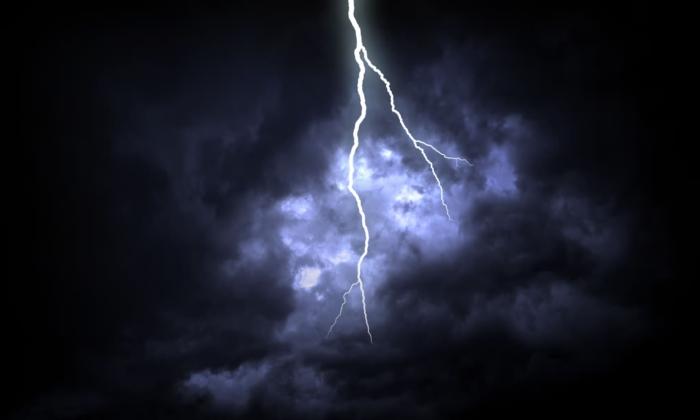TIANJIN, China—Rescuers pulled out a firefighter who was trapped for 32 hours after responding to a fire and huge explosions in the Chinese port city of Tianjin as authorities moved forward gingerly Friday in dealing with a fire still smoldering amid potentially dangerous chemicals.
A rapid succession of explosions late Wednesday — one equal to 21 tons of TNT — killed at least 50 people, injured more than 700 and left more than a dozen firefighters missing. They were sparked by a fire at what authorities said were shipping containers containing hazardous material. They struck a mostly nonresidential warehouse district late at night — otherwise the death toll could have been much higher.
However, the toll included at least 17 firefighters among the more than 1,000 sent to respond to the disaster. Firefighters initially responded to a fire at the warehouse and many of them apparently were killed by a series of explosions triggered 40 minutes after the fire was reported. An additional 13 firefighters are missing, officials said.
“Reinforcements had just arrived on the scene and were just getting to work when the explosions occurred and therefore there was no chance to escape, and that’s why the casualties were so severe,” Tianjin Fire Department head Zhou Tian said at a news conference early Friday. “We’re now doing all we can to rescue the missing,” Zhou said.

One firefighter was pulled from the zone at about dawn Friday and brought to a hospital, where he was being treated for face, chest and feet injured, the state broadcaster CCTV reported.
Authorities have publicly assured a skeptical public that the blasts have not contaminated the air but have been relatively reticent about other concerns raised, such as whether residences were too close to the warehouse and whether firefighters may have sparked the blasts by spraying water on volatile chemicals.
Many Tianjin residents weren’t taking any chances, and could be seen Friday wearing air-filtering masks.
“I don’t usually wear a mask but I don’t quite trust what the government says,” said Ma Wiehan, wearing a mask while walking with her 6-month-old daughter. “I’m doing this for my child.”
One report in the Chinese press suggested that water used by first responders may have come into contact with a chemical that explodes on contact with water, but an official also is quoted as saying the first wave of firefighters could not have sparked the blasts.

Many of the fire trucks seen at the site hours after the blasts use a kind of firefighting foam.
Authorities have not said what caused the explosions, saying only that they originated at the warehouse owned by Ruihai International Logistics. Its website says the company is authorized to handle chemicals ranging from flammable gases and liquids, including compressed natural gas and ethyl acetate, to chemicals that explode on contact with water, including sodium cyanide and calcium carbide.
However, the warehouse was a transit point and authorities have no clear picture of what was there at the time of the blasts. Records at the site were destroyed in the disaster meaning that authorities must rely on customs documents, said Gao Huaiyou, deputy director of occupational safety in Tianjin.
City officials so far have confirmed only that calcium carbide, potassium nitrate and sodium nitrate were at the warehouse.
Zhou said further firefighting efforts must go slow because of the potentially complex mix of chemicals at the site.

“Many types of different materials with different characteristics are mixed together and could at any time result in a chemical reaction or explosion,” Zhou said.
In an interview with the Shanghai-based publication The Paper, a fire official at the Ministry of Public Safety, Lei Jinde, is quoted as confirming that the first wave of firefighters used water to cool down areas on fire. When asked whether he knew there was calcium carbide was at the warehouse, he said yes and that firefighters would not have sprayed water on the substance.
When asked whether initial firefighter response could have sparked the second blast, Lei said “No. The response procedure must have been scientific.”
On the day after the blasts, Tianjin’s environmental protection chief Wen Wurui told a news conference that there had been no apparent contamination of the air, based on samples taken at five air monitoring stations throughout the city. He also said all waterways leading from the disaster site to the sea had been sealed to contain any potential water leaks.





